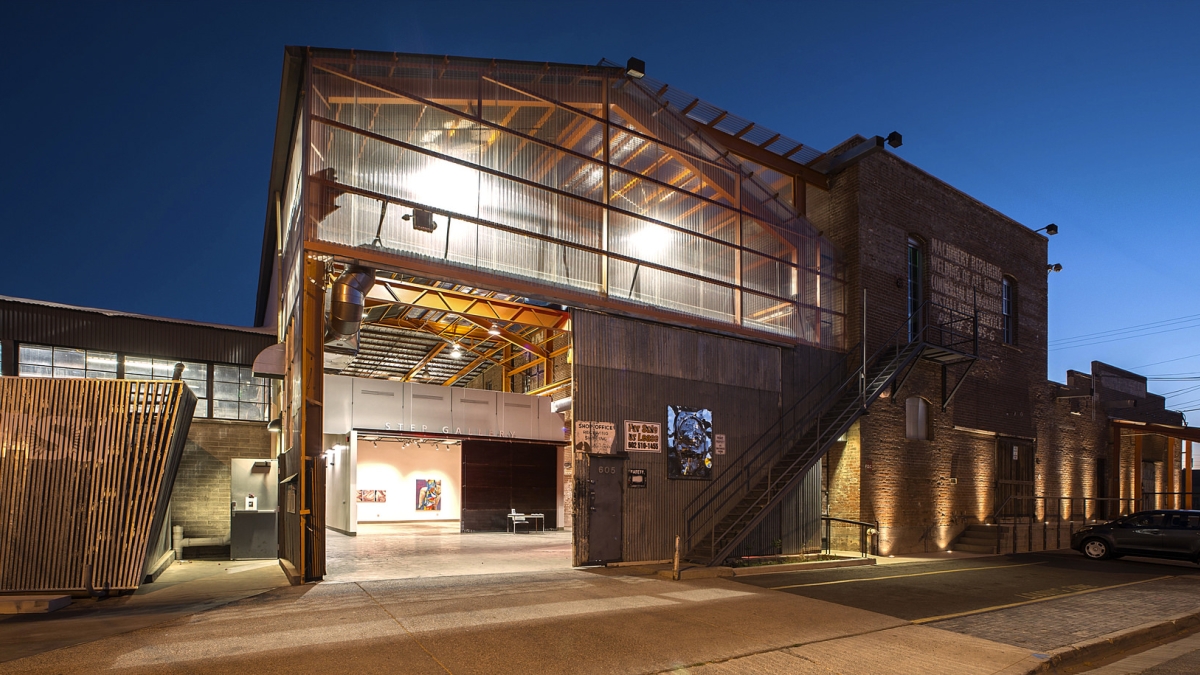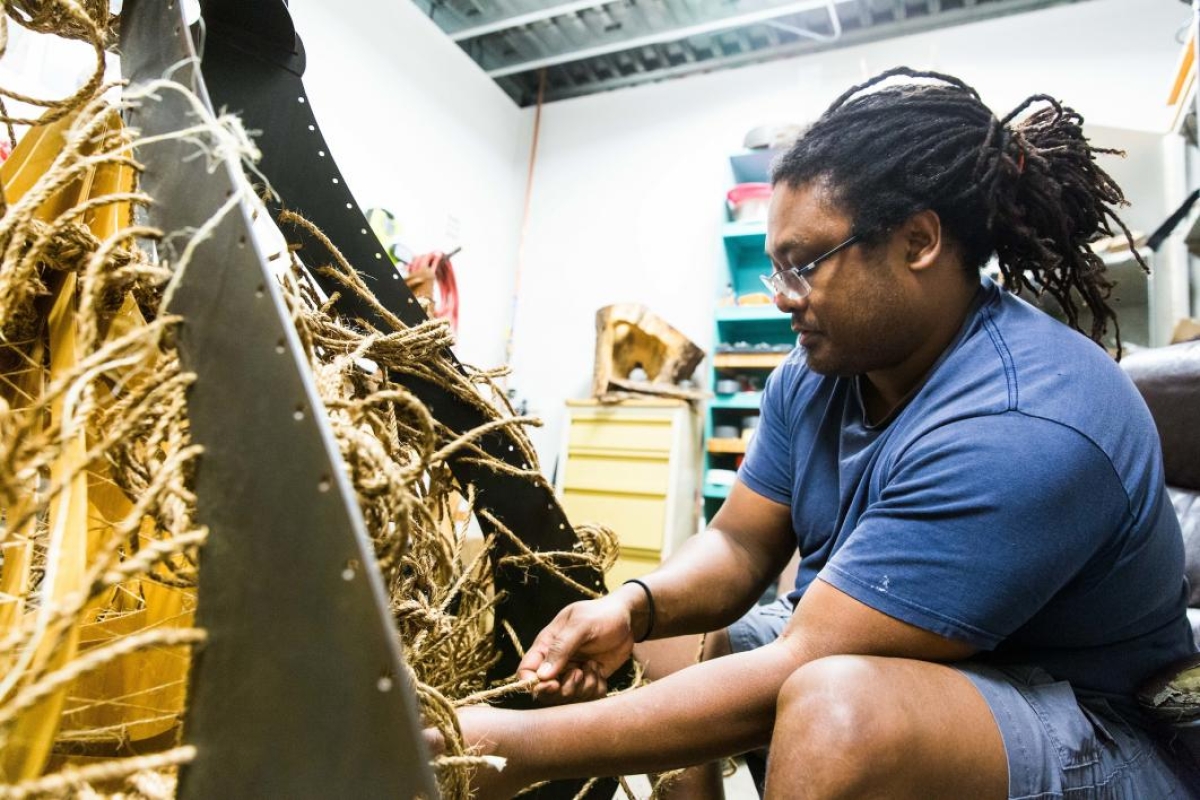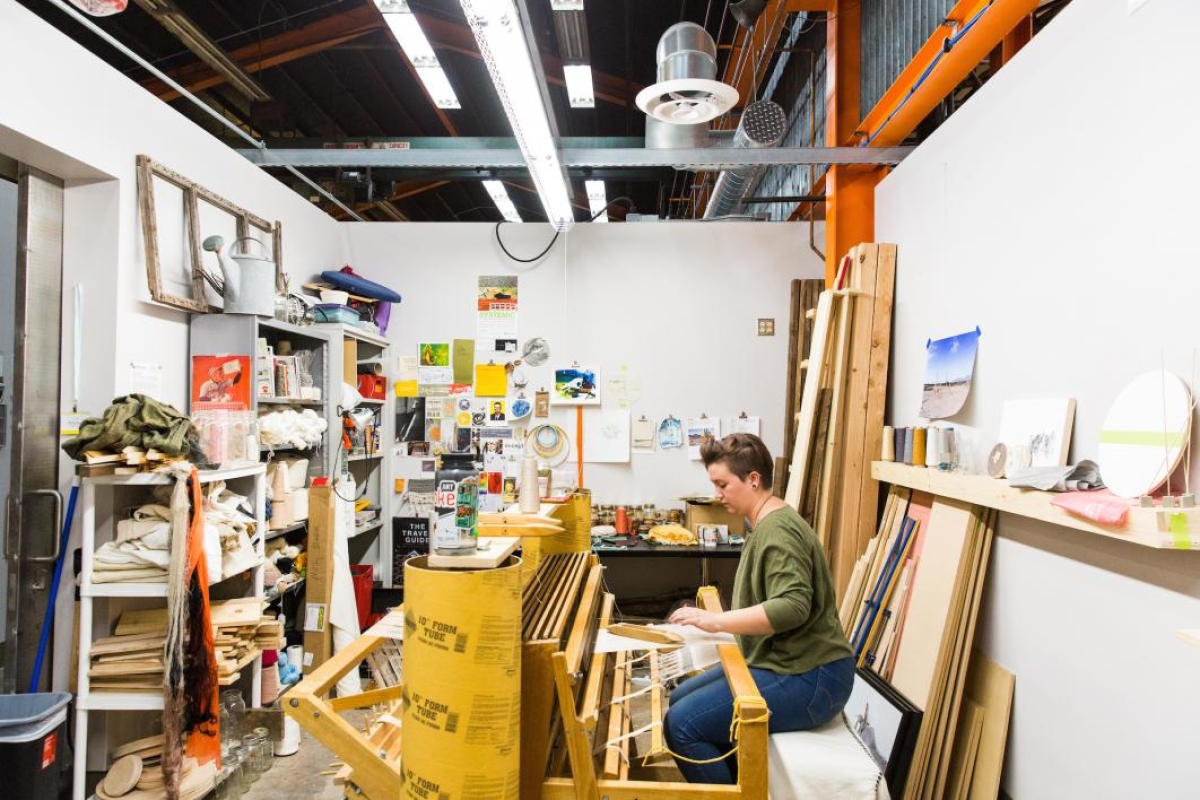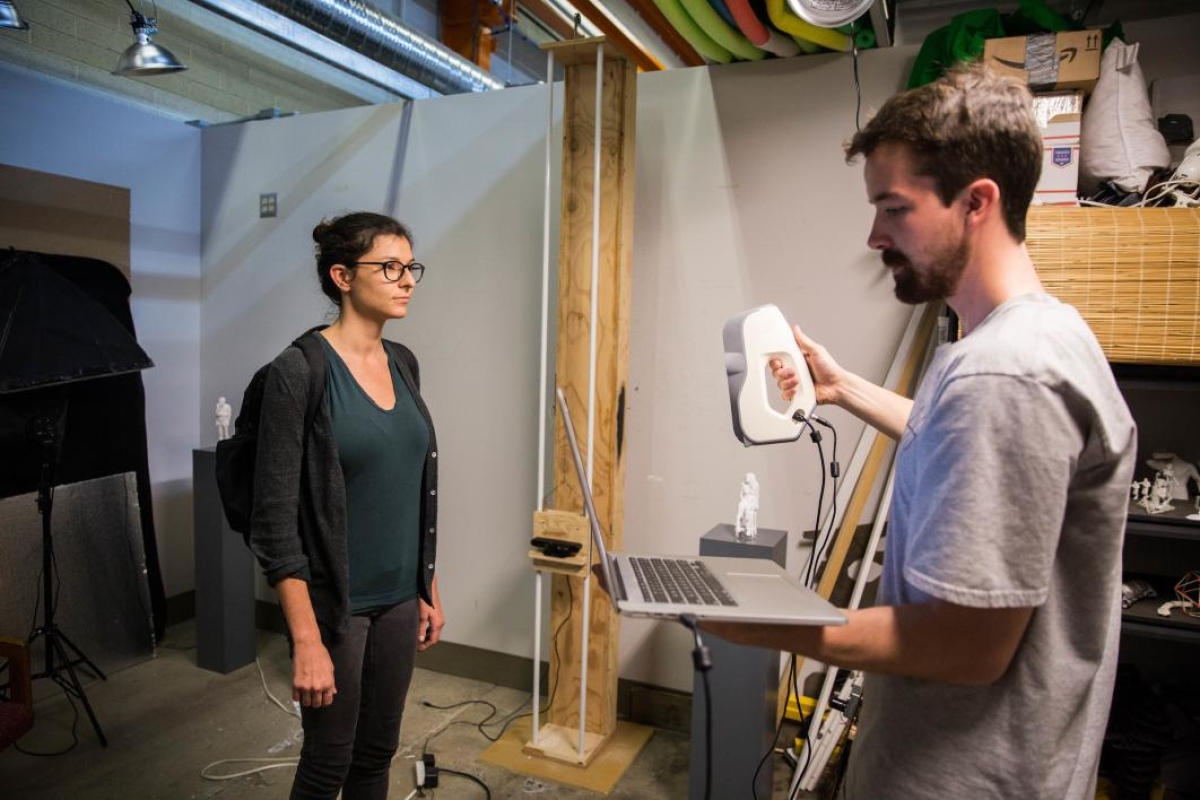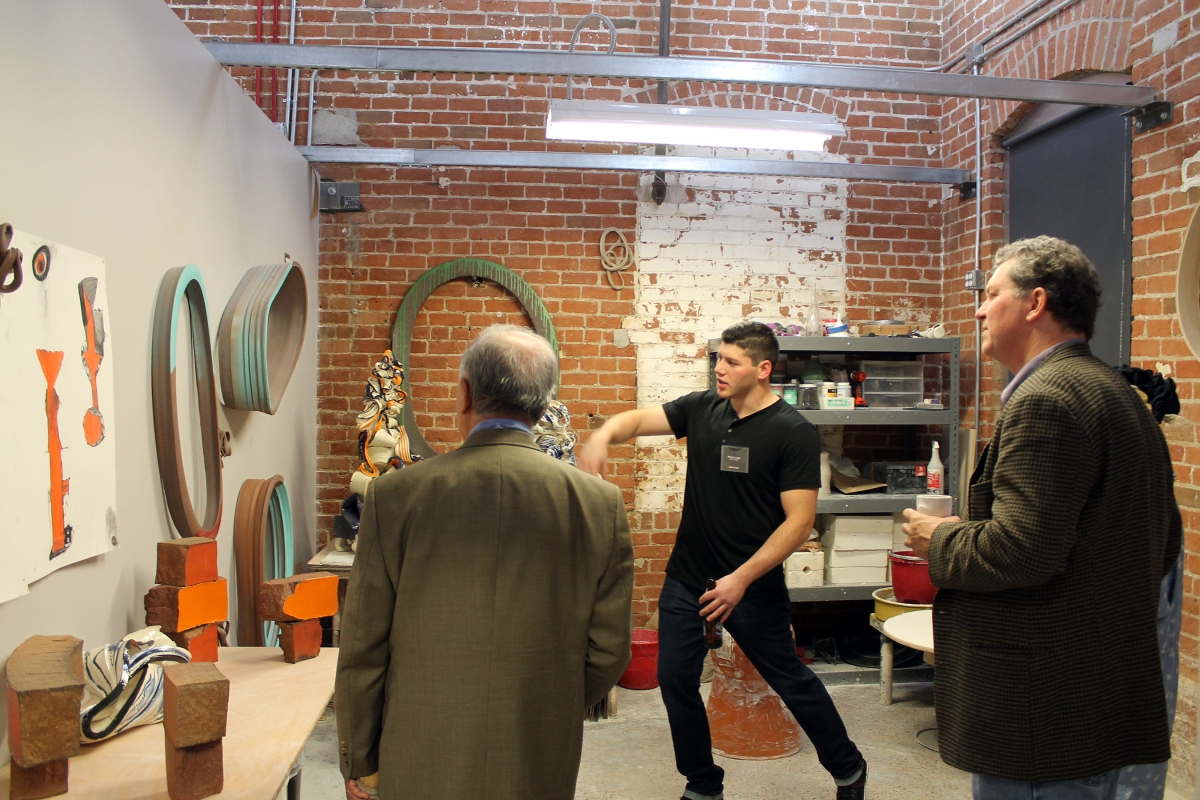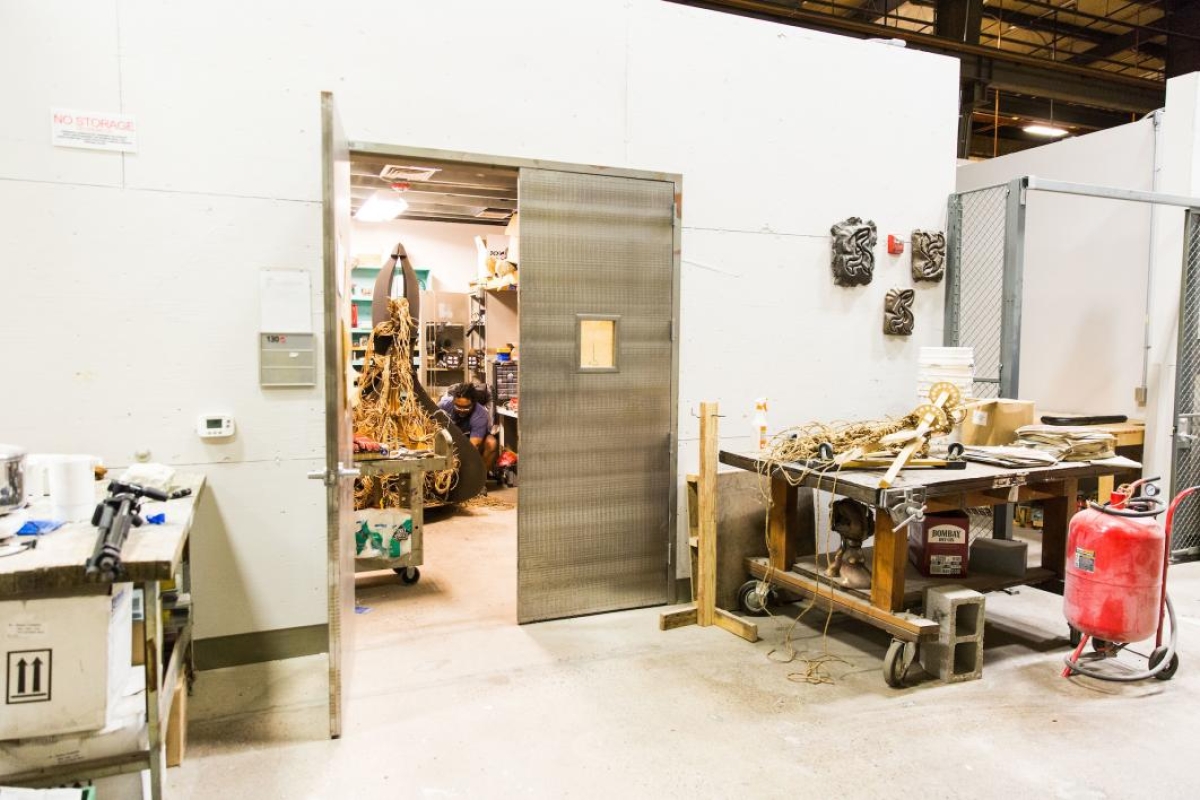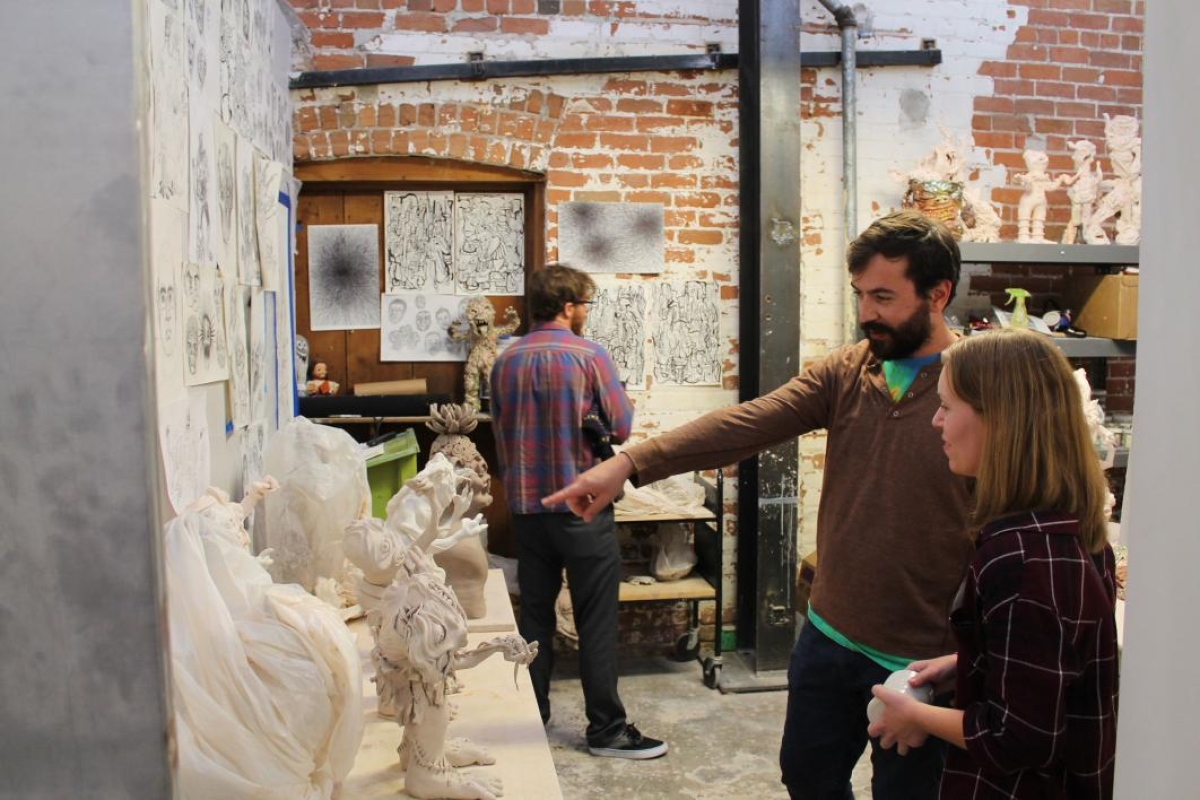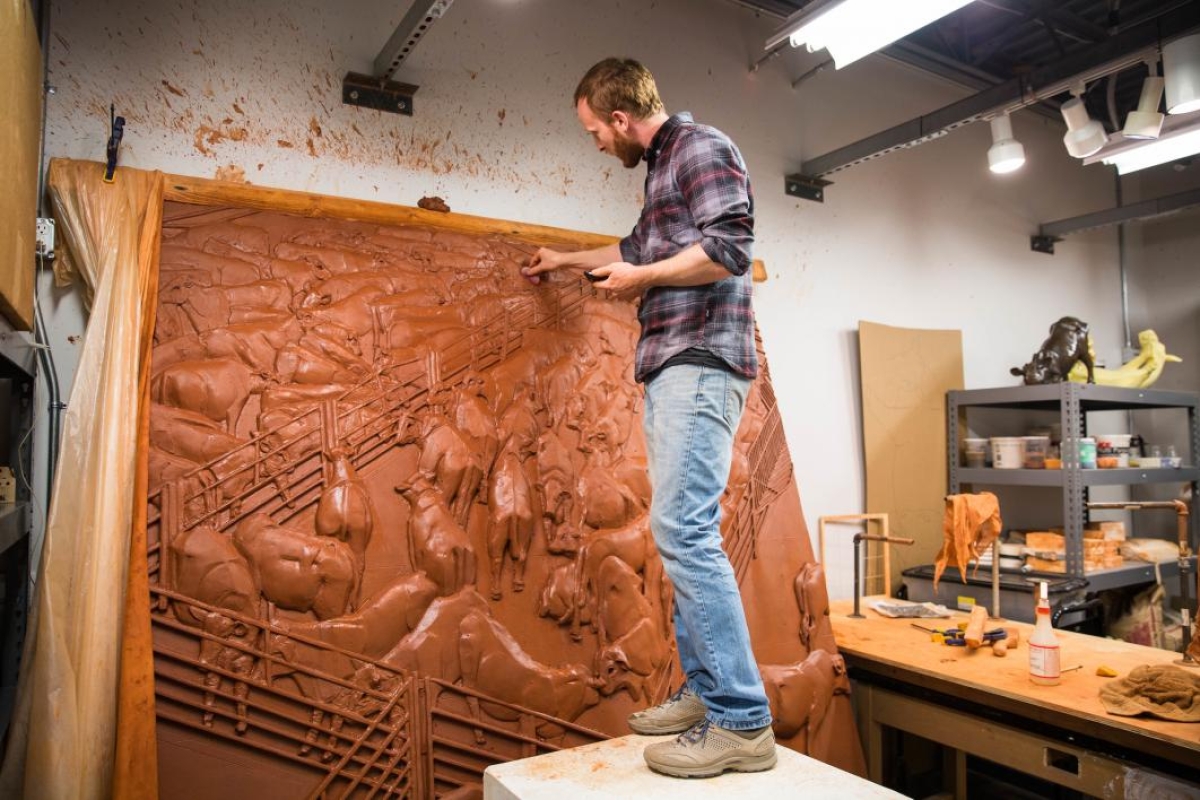Editor's note: This story is being highlighted in ASU Now's year in review. To read more top stories from 2016, click here.
Ceramic cows are taking over an old warehouse in downtown Phoenix where artist Elliott Kayser has his studio: small, painted cows spotted with little bumps in contrasting colors, medium-size cows giving birth to shiny golden calves, a large terracotta relief of cows on a modern cattle farm.
In a different part of the same historic building, Alvin Huff works on a massive steel sculpture threaded with and entangled by rope. He says he’s inspired by existence in macro and micro scales, the ecological view of things vs. DNA and the way things are structured.
The two artists are graduate students in ASU’s School of Art, and although their work doesn’t look anything alike, both say they’re influenced by the place where they produce it: Grant Street Studios. Once destined to become rubble, the 100-year-old structure now serves as the state-of-the-art center of activity and production for graduate fine arts programs in ASU’s Herberger Institute of Design and the Arts. And the public is invited to see the space from 6-9 p.m. the first and third Fridays of each month, including during this week's First Friday's art walk.
Kayser calls it “a beehive of sorts. The creative energy around here is buzzing, and there’s an opportunity for dialogue with artists from other disciplines.”
Huff agrees, saying: “I like that we have all the different departments together. It’s good to be inspired by other people, and I like to see them grow. We kind of mentor each other.”
A sampling of artists at Grant Street Studios; see their fuller video stories later in this story. Videos by Deanna Dent/ASU Now
Originally constructed by Paul Litchfield's Southwest Cotton Company in 1917-18, the sprawling two-story building at 605 E. Grant St. later housed Karlson Machine Works. By 2004 — when artist and developer Michael Levine bought the warehouse — it was, in his words, “bulldozer bait.”
Three years of restoration led to the building receiving the grand prize in the 2007 Governor’s Heritage Preservation Honor Awards: “Levine achieved a standard of rehabilitation that is rarely met,” judges wrote, “due to his skill in blending the contemporary with the historic fabric.”
Recognizing an extraordinary and extraordinarily well-situated space, ASU School of Art Director Adriene Jenik arranged to move graduate programs in painting and drawing into the building in 2014, along with the Step Gallery, and a critique space.
In their new home, the MFA students enjoyed spacious individual studios with high ceilings and natural light, wireless internet connections and the flexibility to accommodate special needs and equipment. Almost immediately, Grant Street Studios became part of the thriving downtown Phoenix arts scene, linking students with established professional artists and downtown gallery spaces.
Jenik says that Herberger Institute Dean Steven J. Tepper, who arrived at ASU a few months after the first programs moved to Grant Street, “got the vision that was being put forward, and he supported it 100 percent.”
In fact, the School of Art’s presence in downtown Phoenix dovetails with Tepper’s vision for a design and arts corps that will serve the city, an initiative designed both to invigorate Phoenix and to give students the real-world experience they need to realize their ideas in a practical setting.
Between 2014 and 2016, other School of Art graduate programs in fine arts also migrated from Tempe to Phoenix, including intermedia, sculpture, fibers and photography, together with the Northlight Gallery, which showcases photographic work.
In the spring of this year, ASU purchased the building from Levine, which made it possible for the ceramics program to move into the space as well. The printmaking program, meanwhile, is scheduled to make the move downtown in 2017.
At the ceramics program’s grand opening in the new space on Nov. 19, visitors toured the students’ new studio spaces; viewed “Exchange: A Group Ceramics Exhibition” at Step Gallery, featuring works by ceramics graduate students from ASU and San Diego State University; and admired the new Blaauw kiln, one of two that ASU received thanks to a grant from the Windgate Foundation.
According to Susan Beiner, recently named Joan R. Lincoln Endowed Professor in Ceramics, Blaauw kilns have been internationally recognized as some of the most sophisticated and efficient kilns in the ceramic field.
“These kilns are state-of-the-art and can be controlled either manually or via computer to provide exceptionally precise firing conditions,” Beiner explains. “With their higher efficiencies due to better insulating material, zone control and burner technology, we are able to consume significantly less natural gas, thus reducing energy use and expense. The kilns are also designed with a safer burner system and produce much less heat loss to the kiln exterior, resulting in a safer environment for our students.”
Another resource Beiner points to proudly is the glaze room, which she says “helps stimulate problem solving and creative thinking of glaze chemistry.”
“There’s no other institution in the country with a diverse array of resources quite like ours,” said Garth Johnson, curator of ceramics for the ASU Art Museum, noting that the ASU ceramics program was already one of the top ceramics programs in the nation before the move. In addition, the photography program is ranked ninth in the country and the printmaking program fifth. U.S. News and World Report ranks the ASU School of Art 20th nationally among fine arts schools.
One important aspect of the ceramics move is the access to various kinds of equipment in the same building, Beiner says, which allows students alternatives for mixed-media works. A new 3-D printer lab opened to students this semester.
Touring the new facilities, Greg Lehmann, who heads the ASU Art Museum board, called ASU “a trailblazer in the development of creative spaces in the Valley. The fact that ASU stepped up to anchor itself in the arts district shows real vision.”
Ceramicist Kayser, meanwhile, says the space has allowed him to make his work bigger — he nods to the large terracotta ceramic frieze of cows, in progress, that takes up a good part of one of the studio’s walls. More than that, Kayser says, is the effect of having the whole community of graduate students from other programs such as sculpture, photography and painting in one physical place.
“It allows for impromptu conversations,” Kayser says. “Those ideas percolate, and they end up having a big impact.”
Jenik says that students being able to get together across practices is one of the most important aspects of the new space. The other, she says, is “the interchange with the public. You can see how it raises the bar for the students. And the public gets to see the students’ talent, which was somewhat hidden before. Now, we are in a space made for us, a space with an open door to the community.”
A closer look at artists in the studio
Four ASU students explain the inspiration behind their work.
Elliott Kayser, ceramics artist (follow him on Instagram here)
Alvin Huff, sculptor (follow him on Instagram here)
Molly Koehn, environmental artist (follow her on Instagram here)
Andrew Noble, intermedia artist (follow him on Instagram here)
Top photo: The exterior of Grant Street Studios in downtown Phoenix. Photo by Craig Smith
More Arts, humanities and education

ASU graduate education programs are again ranked among best
Arizona State University’s Mary Lou Fulton College for Teaching and Learning Innovation continues to be one of the best graduate colleges of education in the United States, according to the…
ASU FIDM students to see their designs on the runway at Uncertainty Fashion Showcase
Nola Hill is perfecting every stitch of her fashion design collection, which she started conceptualizing last summer.She is among 30 ASU FIDM fashion design students who have been working late into…

ASU+GSV Summit brings experts together to discuss innovation in education
This week, Arizona State University President Michael Crow and other university leadership joined education and learning experts from around the globe at the ASU+GSV education technology summit in…


